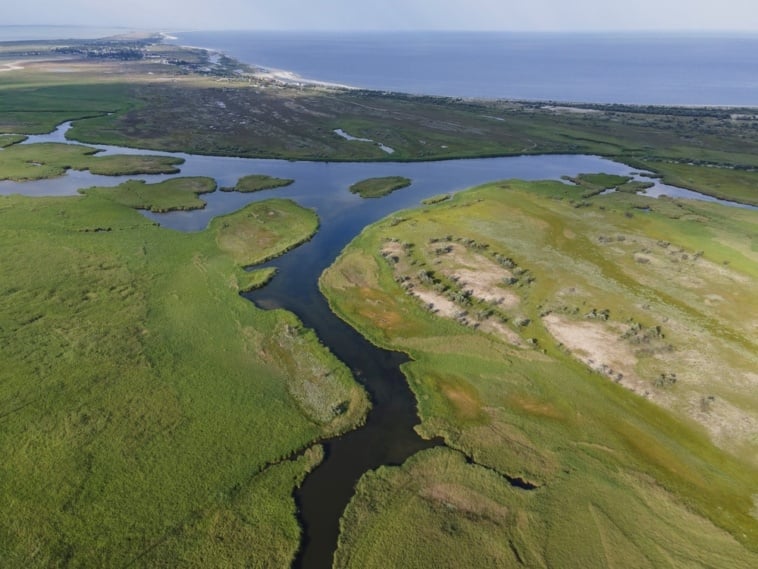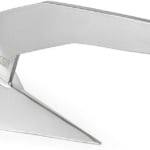So you’ve found yourself facing the challenge of navigating through narrow water channels? Don’t fret, because in this article, we’re going to share some invaluable tips on how to handle and navigate through these tight spaces like a pro. Whether you’re an experienced sailor or a beginner, we’ve got you covered with practical advice and techniques to ensure a smooth and successful journey. From understanding the dynamics of narrow channels to mastering the art of maneuvering, get ready to tackle any waterway with confidence and ease. Let’s dive right in!
Understanding the Challenges
Navigating through narrow water channels can present a variety of challenges that require careful evaluation and preparation. By understanding the characteristics of the channel and identifying potential hazards, as well as assessing water currents and tides, you can better navigate through these challenging waters.
Evaluating the Channel’s Characteristics
Before embarking on a journey through a narrow water channel, it is essential to evaluate the characteristics of the channel. Consider factors such as the width, depth, and any obstacles or potential obstructions that may be present. Knowing the width of the channel will help determine the size of the vessel you can safely navigate through. Understanding the depth is crucial to ensure you have enough clearance under your keel. Additionally, noting any obstacles or potential hazards, such as rocks, reefs, or submerged objects, will allow you to plan your route accordingly.
Identifying Potential Hazards
Identifying potential hazards is an essential part of navigating through narrow water channels. Carefully survey the area and take note of any submerged objects, shallow areas, or strong currents that may pose a risk to your vessel. It is also crucial to be aware of low bridges or overhead power lines that could limit your vessel’s clearance. By identifying these hazards in advance, you can create a plan to navigate around them and ensure the safety of your vessel and crew.
Assessing Water Currents and Tides
Water currents and tides can significantly impact your navigation through narrow channels. Understanding the direction and strength of currents in the channel will help you plan your approach and maneuvering techniques. Additionally, being aware of the tide predictions is vital as it can affect the depth of the channel and the clearance under your vessel. Consult tide tables and current charts to determine the best times to navigate the channel and ensure safe passage.
Navigational Planning
Proper navigational planning is key to a successful journey through narrow water channels. By researching the channel, obtaining nautical charts, and reviewing weather conditions, you can ensure that you are well-prepared and equipped for the journey ahead.
Researching the Channel
Thoroughly researching the channel is essential before navigating through narrow waters. Gather information about the channel’s features, including any known hazards or challenging areas. Consult local boating guides, manuals, or online resources for first-hand accounts and tips from experienced mariners who have navigated the channel. This research will provide valuable insights and help you make informed decisions when plotting your course.
Obtaining Nautical Charts
Nautical charts are invaluable tools for navigating through narrow water channels. Obtain the most up-to-date charts for the area you plan to navigate. These charts will provide detailed information about the channel’s depth, navigational aids, and potential hazards. Study the charts carefully and mark your intended route, taking note of key points such as buoy locations and sound signals. By relying on accurate nautical charts, you can navigate with confidence and minimize the risk of running aground or encountering other navigational challenges.
Reviewing Weather Conditions
Weather conditions can have a significant impact on your journey through narrow water channels. Before setting sail, review the weather forecast for the duration of your planned trip. Pay close attention to factors such as wind speed and direction, wave height, and any potential storms or adverse weather conditions. Unfavorable weather can affect your ability to navigate safely, and it is essential to adjust your plans accordingly. By staying informed about the weather, you can make informed decisions and ensure a safe passage through the narrow channel.
Preparing Your Vessel
Preparing your vessel properly is crucial for navigating through narrow water channels safely. By maintaining the right size and type of vessel, ensuring proper equipment and safety gear, as well as securing loose items and clearing the deck, you can minimize the risk of accidents and ensure a smooth journey.
Maintaining the Right Size and Type of Vessel
Choosing the right size and type of vessel is essential for navigating narrow water channels. It is important to consider the width and depth of the channel when selecting your vessel. A vessel that is too wide or draws too much depth may run aground or encounter difficulties maneuvering through tight spots. Additionally, selecting a vessel with appropriate handling capabilities and maneuverability is crucial for successfully navigating through narrow waters. Consider consulting with experienced mariners or boat manufacturers to determine the ideal vessel for the specific channel you plan to navigate.
Ensuring Proper Equipment and Safety Gear
Before setting off on your journey, it is crucial to ensure that your vessel is equipped with the necessary safety gear. This includes life jackets, fire extinguishers, distress signals, and a first aid kit. Inspect all safety equipment to ensure that it is in good working condition and readily accessible. Additionally, verify that your vessel’s navigation lights are functioning correctly, as they are essential for signaling your presence to other boaters, particularly in low visibility conditions. Prioritize safety on board to mitigate potential risks during your journey through the narrow water channel.
Securing Loose Items and Clearing the Deck
Navigating through narrow water channels can be challenging, particularly when it comes to vessel handling and maneuvering. To ensure maximum control and stability, it is necessary to secure all loose items on the vessel. Clear the deck of any unnecessary gear or equipment that could impede your ability to navigate safely. Secure items such as fenders, lines, and equipment storage to prevent them from becoming hazards or obstacles while maneuvering through the narrow channel. By keeping the deck clear and secure, you can focus on safe and effective vessel handling.
Maneuvering Techniques
Navigating through narrow water channels requires specific maneuvering techniques to safely handle your vessel. By understanding approach strategies, managing speed and momentum, and comprehending propeller effects, you can confidently navigate through these challenging waters.
Approach Strategy
Choosing the right approach strategy is crucial for successfully navigating a narrow water channel. Before entering the channel, consider factors such as wind direction, tidal currents, and potential obstructions. Plan your approach to take advantage of favorable conditions, such as utilizing wind or current to assist in maneuvering. Prioritize maintaining control of your vessel throughout the approach and ensure that you have a clear understanding of your intended route. By establishing a well-thought-out approach strategy, you can minimize risks and navigate through the narrow channel with confidence.
Managing Speed and Momentum
Properly managing speed and momentum is essential when navigating through narrow water channels. Adjust your vessel’s speed to a level that allows for optimal control and maneuverability. Approach the channel at a safe speed, considering factors such as wind, currents, and visibility conditions. Be prepared to slow down or stop if necessary, particularly when encountering challenging areas or potential hazards. By effectively managing your vessel’s speed and momentum, you can maintain control and respond quickly to any unexpected situations that may arise.
Understanding Propeller Effects
Understanding how propeller effects can influence vessel maneuverability is vital for navigating through narrow water channels. Become familiar with the impact of prop wash and steerage in your specific vessel. Prop wash, the water churned up by the propellers, can affect the vessel’s responsiveness to steering, especially at lower speeds. Additionally, understanding how your vessel responds when going astern (in reverse) and how it affects maneuverability will be valuable in navigating tight spaces. By understanding these propeller effects, you can anticipate and respond accordingly, enhancing your vessel’s maneuverability through narrow channels.
Communication and Situational Awareness
Maintaining clear communication and situational awareness is crucial when navigating through narrow water channels. By practicing radio communication etiquette, monitoring VHF channels, and maintaining visual awareness, you can ensure the safety of your vessel and crew.
Radio Communication Etiquette
Utilizing proper radio communication etiquette is crucial for effective and clear communication while navigating through narrow water channels. Familiarize yourself with the appropriate procedures and protocols for using marine VHF radios. Use concise and clear language, making sure to state your vessel’s name, position, and intentions when communicating with other boaters or authorities. Avoid excessive use of radio channels and be considerate of others’ communications. By observing proper radio communication etiquette, you can enhance situational awareness and ensure effective communication with other vessels.
Monitoring VHF Channels
Monitoring VHF channels is essential for staying informed about potential hazards or communication from other vessels when navigating in narrow water channels. VHF channel 16 is the international hailing and distress channel and should always be monitored, especially in areas with heavy boat traffic. Additionally, monitor local channel 9 or other designated channels for any navigational information or updates. Stay alert and listen for any important communication that may impact your journey through the narrow channel. By monitoring VHF channels, you can remain aware of your surroundings and respond promptly to any communication or potential threats.
Maintaining Visual Awareness
Maintaining visual awareness is crucial when navigating through narrow water channels. Keep a constant lookout for other vessels, navigation aids, and potential hazards such as rocks or shallow areas. Use binoculars to enhance your visibility and inspect the channel ahead for any obstacles or navigational aids. Ensure that your vessel’s navigation lights, as well as any additional lighting on board, are working correctly, particularly during low visibility conditions. By maintaining visual awareness, you can anticipate any challenges or potential risks and navigate through the narrow water channel safely.
Effective Use of Navigation Aids
Navigation aids play a critical role in successfully navigating through narrow water channels. By utilizing buoy systems, interpreting daymarks and navigation lights, and understanding sound signals, you can navigate with confidence and precision.
Utilizing Buoy Systems
One of the key navigation aids in narrow water channels is the buoy system. Buoy systems consist of various colored and numbered buoys that mark the route through the channel. Familiarize yourself with the specific buoy markings for the channel you plan to navigate. Green and red buoys indicate the edges of the channel, and it is crucial to stay between them. Additionally, be aware of any special-purpose buoys that may mark hazards or restricted areas. By utilizing buoy systems, you can maintain the correct course through the narrow channel and avoid potential grounding or collision.
Interpreting Daymarks and Navigation Lights
Daymarks and navigation lights serve as essential visual signals for navigating through narrow water channels, particularly during low visibility or nighttime conditions. Daymarks are signs or objects on land that are specifically designed to aid navigation. These may include shapes, colors, or symbols that indicate the channel’s direction or potential hazards. Familiarize yourself with the daymarks for the channel you plan to navigate and understand their meanings. Similarly, navigation lights on buoys or other structures provide visual guidance and indicate the direction and position of the channel. Learn the significance of different light colors, patterns, and configurations to effectively navigate through the narrow channel.
Understanding Sound Signals
Sound signals play a vital role in communicating intent and maneuvering through narrow water channels. Sound signals are particularly useful in situations where visibility is limited, such as foggy conditions. Familiarize yourself with the different sound signals required by international navigation rules, such as the short blast, prolonged blast, or two short blasts. Understand the significance of different sound signals and their contextual meaning when navigating through narrow channels. By understanding and utilizing sound signals effectively, you can enhance your vessel’s visibility and communication with other vessels in the channel.
Mastering Essential Seamanship Skills
Mastering essential seamanship skills is crucial for navigating through narrow water channels confidently. By developing boat handling skills, practicing precision navigation, and executing correct anchoring techniques, you can enhance your overall seamanship and ensure safe passage through these challenging waters.
Developing Boat Handling Skills
Boat handling skills play a vital role in successfully navigating through narrow water channels. Practice maneuvering your vessel in various conditions, such as tight turns or close-quarter situations, to hone your boat handling techniques. Learn how to use your vessel’s propulsion systems effectively, including bow thrusters or stern thrusters if available, to enhance maneuverability. Additionally, practice docking and undocking techniques to ensure smooth transitions and precise control. By developing strong boat handling skills, you can confidently navigate through narrow channels and respond effectively to any unexpected challenges.
Practicing Precision Navigation
Precision navigation is crucial when navigating through narrow water channels, where even minor deviations from the intended route can lead to grounding or collision. Practice using your vessel’s navigation instruments, such as GPS or chart plotters, to maintain accurate positioning. Regularly cross-reference current positions with nautical charts and other navigation aids to ensure you are on the correct course. Use radar or sonar systems, if available, to detect any potential obstacles or changes in the channel’s depth. By practicing precision navigation techniques, you can navigate with confidence and minimize the risk of navigational errors.
Executing Correct Anchoring Techniques
Anchoring properly is an important skill to master when navigating through narrow water channels. Understand the correct anchoring techniques for the conditions you may encounter in the channel. Ensure that your anchor, chain, and rode are in good condition and appropriate for the channel’s depth. Select an anchoring location carefully, considering factors such as wind, currents, and potential swing room. Ensure that the anchor is set firmly, using enough scope to provide sufficient holding power. By executing correct anchoring techniques, you can safely secure your vessel when necessary and confidently navigate through the narrow channel.
Dealing with Emergencies
While navigating through narrow water channels, it is essential to be prepared for potential emergencies. By creating an emergency plan, understanding how to handle collisions or groundings, and knowing how to rescue in swift currents, you can respond effectively and ensure the safety of your vessel and crew.
Creating an Emergency Plan
Creating an emergency plan is crucial to respond promptly and effectively in critical situations. Establish predetermined roles and responsibilities for each crew member in the event of an emergency. Train your crew on emergency procedures, including how to use safety equipment and communicate distress signals. Develop a communications plan with designated emergency contacts onshore and establish a regular check-in schedule to ensure someone knows your intended route and estimated time of arrival. By having a well-defined and practiced emergency plan, you can mitigate potential risks and handle emergencies efficiently.
Handling Collisions or Groundings
Collisions or groundings can occur unexpectedly, even in narrow water channels. Knowing how to handle such situations is crucial to minimize damage and ensure the safety of your vessel and crew. In the event of a collision, assess the situation for any immediate dangers, such as taking on water or potential fire hazards. If grounded and unable to refloat the vessel, consider contacting local authorities or professional towing services for assistance. Stay calm and follow established emergency procedures to ensure the safety of all on board. By remaining composed and knowing how to handle collisions or groundings, you can mitigate potential risks and navigate through the situation safely.
Rescuing in Swift Currents
Navigating through narrow water channels with swift currents can present additional challenges, particularly when it comes to rescue operations. If faced with the need for a rescue in swift currents, ensure the safety of all involved by assessing the risks and prioritizing personal protective equipment. If possible, deploy flotation devices or safety lines to provide stability and support during the rescue. Consider enlisting the help of trained professionals or local authorities who have experience with swift water rescues. By being prepared, following established rescue procedures, and seeking assistance when needed, you can successfully execute rescues in swift currents and prioritize the safety of all involved.
Understanding Legal and Environmental Regulations
Understanding legal and environmental regulations is essential when navigating through narrow water channels. By knowing navigation laws and regulations, protecting marine life and ecosystems, and respecting restricted zones and speed limits, you can navigate responsibly and minimize your impact on the environment.
Knowing Navigation Laws and Regulations
Ensure that you are familiar with the navigation laws and regulations that govern the waterways you plan to navigate. These laws may include rules regarding vessel speed, right-of-way, and navigation in narrow channels. Complying with these regulations not only ensures the safety of your vessel and others but also avoids potential legal consequences. Stay informed about any changes or updates to navigation laws and regulations and adapt your behavior accordingly. By knowing and obeying the navigation laws and regulations, you can navigate responsibly and reduce the risk of accidents or conflicts with other boaters.
Protecting Marine Life and Eco-systems
Narrow water channels often encompass fragile marine ecosystems that must be protected. Take care to avoid damaging or disturbing marine life, such as coral reefs or seagrass beds, when navigating through these channels. Reduce your vessel’s impact on the environment by minimizing wake and avoiding shallow areas that could result in groundings or propeller damage to sensitive habitats. Dispose of waste properly and avoid any pollutants or contaminants that could harm marine life or ecosystems. By practicing responsible boating and respecting marine life and ecosystems, you can help preserve these delicate environments for future generations.
Respecting Restricted Zones and Speed Limits
Restricted zones and speed limits are in place to ensure the safety of all vessels and protect sensitive areas. Pay close attention to any signs or markers indicating restricted zones or no-wake zones. Reduce your vessel’s speed to comply with posted limits, particularly in areas with heavy boat traffic or near residential areas. Approach restricted zones with caution and follow established procedures for navigation through these areas, such as maintaining a safe distance from designated exclusion zones. By respecting restricted zones and adhering to speed limits, you can navigate responsibly and contribute to a safer and more enjoyable boating experience for everyone.
Gaining Experience and Confidence
Gaining experience and confidence is a crucial part of becoming a skilled navigator through narrow water channels. By seeking professional training opportunities, practicing in simulated environments, and gradually building experience, you can continually improve your skills and enhance your ability to navigate safely and effectively.
Seeking Professional Training Opportunities
Professional training opportunities provide valuable knowledge and experience that can help you navigate through narrow water channels with confidence. Consider enrolling in boating courses or workshops that focus on navigation skills specific to narrow channels. These courses can provide hands-on training, expert guidance, and valuable insights from experienced instructors. Take advantage of any training programs or certifications offered by recognized boating organizations to further enhance your skills as a navigator. By seeking professional training opportunities, you can gain valuable knowledge and practical experience that will benefit you in navigating narrow channels.
Practicing in Simulated Environments
Practicing in simulated environments, such as navigation simulators or virtual reality training, can help you refine your navigational skills in a controlled setting. Simulators allow you to simulate various scenarios, including navigating through narrow water channels, and practice your decision-making and situational awareness. By utilizing simulated environments, you can familiarize yourself with potential challenges and practice different maneuvers and techniques without the risks associated with real-world navigation. Regular practice in simulated environments will improve your confidence and prepare you for navigating through narrow channels in real-life situations.
Building Experience Gradually
Building experience gradually is key to becoming a competent navigator through narrow water channels. Start by navigating through channels with wider widths and fewer potential hazards, gradually increasing the difficulty as your skills and confidence grow. Begin by navigating during daylight hours with favorable weather conditions, and gradually expand to more challenging conditions, such as low visibility or stronger currents. Seek opportunities to gain experience in different topographical settings, such as rivers, estuaries, or coastal areas. By building experience gradually, you can develop the necessary skills and judgment required to navigate through narrow channels confidently while minimizing risks.
In conclusion, handling and navigating through narrow water channels require careful evaluation, thorough planning, and a variety of skills. By understanding the unique challenges of navigating these channels, conducting thorough research, and being well-prepared with the right vessel and equipment, you can navigate these challenging waters safely. Mastering maneuvering techniques, maintaining clear communication and situational awareness, and effectively utilizing navigation aids are also crucial for a successful journey. Additionally, being prepared with emergency plans, understanding legal and environmental regulations, and continuously gaining experience and confidence will greatly contribute to becoming a skilled navigator through narrow water channels. With proper preparation, practice, and a responsible approach, you can navigate through narrow channels confidently and enjoy the beauty and challenges they present.





